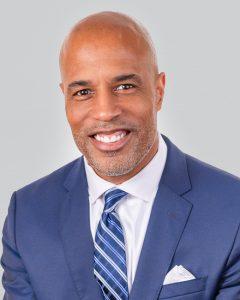As an elementary teacher in Elyria, Ohio, a small urban district about 30 miles west of Cleveland, I looked forward to asking my students the question all my teachers had asked me that first day of school: “What did you do this summer?”
However, I quickly realized that many of the students in my school didn’t have the experiences I was fortunate to have growing up — joining my family on countless road trips to destinations around the country, using our time for fun and games and no small amount of learning. My students’ stories were mainly about roaming the neighborhood, hanging out at the mall, and watching television.
It didn’t take me long to recognize these were often the same students who had the greatest challenges remembering what they had learned the previous school year. As a result, we spent most of the first few months of school reviewing the previous year’s material. I was experiencing summer learning loss firsthand; I just didn’t know what it was.
When it comes to summer learning loss, the phrase “If I knew then what I know now” rings especially true for me. If I had known that many youth lose two months in math skills over the summer but that low-income youth also lose more than two months in reading achievement. If I had known the effects of the “summer slide” are cumulative and significantly contribute to the achievement gap between lower- and higher-income children. If I had known that summer learning loss accounts for about two-thirds of the 9th-grade achievement gap in reading!
The reality is that teachers, schools, and districts know these things and have the opportunity to respond. According to Making Summer Count, a report commissioned by The Wallace Foundation and written by researchers at Rand, rigorous studies of voluntary summer programs, mandatory summer programs, and programs that encourage students to read at home in the summer have all found positive effects on student achievement. The combined evidence from these studies suggests that all these types of summer learning programs can mitigate learning losses and even lead to achievement gains.
The follow-up report from Rand, Getting to Work on Summer Learning, offers some specific guidance to school district leaders interested in launching or improving summer learning programs:
- Commit to having a summer program by January.
- Include both district- and site-level staff in planning.
- Deliver planning templates to site leaders.
- Anchor the program in a commercially available and evidence-based curriculum.
- Standardize the curriculum across district sites.
- Include strategies for differentiation in curriculum materials to accommodate at least two ability levels.
- Instruct students in small classes or groups.
- Provide support for students with special needs.
For those who know Learning Forward, you may be asking why we would be interested in summer learning. The reality is that many of the innovative teaching strategies used by teachers during the summer are excellent models for the regular academic year. Summer provides teachers an opportunity to test and refine those techniques that pique children’s interest and motivate them to learn. Often, professional learning to prepare for summer learning is focused on program components and schedules. As districts help prepare teachers for their summer learning experience, it is essential that their professional learning goes well beyond mere logistics.
Rand’s Getting to Work on Summer Learning emphasizes that teachers need opportunities to deeply engage with the summer curriculum. Those districts experiencing the most success, according to the report’s authors, begin giving teachers opportunities to practice the summer curriculum in the spring and also provide coaching support. Principals and other building leaders who are inspired by the effective teaching they observe during the summer can strengthen their schools’ professional learning systems by ensuring those techniques become the norm during the school year.
Additionally, schools can create seamless links between the traditional academic year and the summer learning experience. The goal should be that students enjoy a connected learning experience that spans the entire year.
In a few months, many children will be sitting in cars or airplanes embarking on their summer vacations. Others will be deeply engaged in summer learning experiences sponsored by their school districts and local organizations. Wherever they are, I hope their learning is continuing. Our collective success depends on it.
This blog post is excerpted from the National Association of State Boards of Education’s January 2015 issue of The State Education Standard.
This post originally appeared in Learning Forward’s PD Watch.





![Poil blog v1[1]](https://learningforward.org/wp-content/uploads/bb-plugin/cache/poil-blog-v11-custom_crop.jpg)


